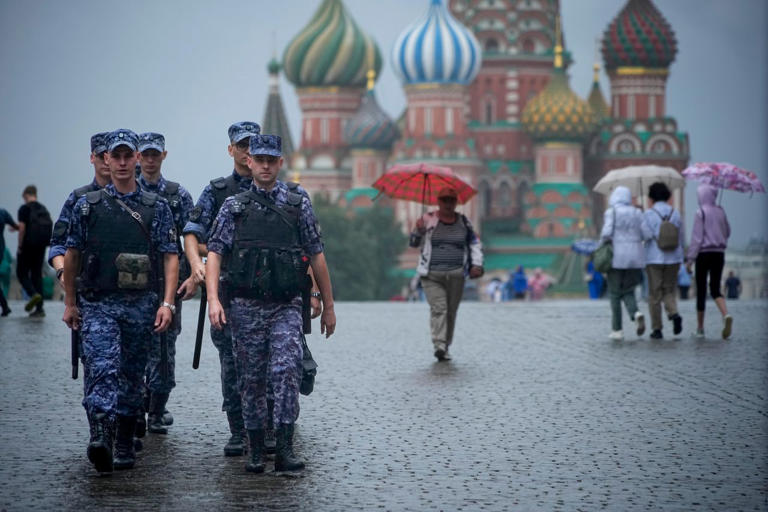Russia is grappling with a severe inflation crisis as it continues its military engagement in Ukraine. Despite the Russian central bank’s aggressive monetary policy, which saw interest rates more than double last year, inflation remains a formidable challenge. As of this month, inflation has surged past 9%, impacting a broad spectrum of goods and services. For instance, the price of potatoes has skyrocketed by 91% so far this year, while economy-class flights have become 35% more expensive. In light of these persistent pressures, the central bank is poised to raise its benchmark interest rate further on Friday to combat the inflationary spiral.
Inflation: A Persistent Challenge
Inflation has become a stubborn characteristic of Russia’s wartime economy. This situation contrasts sharply with the trend in many developed countries, where inflationary pressures have moderated. In Russia, however, inflation continues to escalate, exacerbated by several factors. The government’s substantial increase in military spending and a severe labor shortage—driven by conscription and emigration of working-age men—have both contributed to rising wages and increased prices. Moreover, new rounds of U.S. sanctions have complicated international financial transactions, further inflating costs for importers and exacerbating the economic strain.
Although inflation has not yet reached crisis levels or caused widespread social unrest, it highlights underlying economic imbalances. The persistent rise in prices also means that funding the war effort has become more costly, leading to even greater military expenditures. Alexandra Prokopenko, a former central bank official and current fellow at the Carnegie Russia Eurasia Center, underscores that the war economy leaves Russian authorities with limited options for controlling inflation. As long as the conflict persists, inflation is likely to remain high.
Government and Central Bank Responses
In response to the inflationary pressures, the Kremlin has acknowledged the problem and is working on measures to contain rising prices. However, these efforts face substantial challenges. Following an initial economic downturn after the war’s onset, Russia’s economy experienced a rebound as businesses and officials adapted to circumvent Western sanctions and continue oil exports. This rebound, however, has come with a major shift in economic structure. The government has reverted to a Soviet-style model of military spending, which now constitutes approximately 7% of GDP. This has driven increased production in defense sectors, including tanks, drones, and military clothing, which has contributed to rising wages and prices.
In a notable political shift, President Vladimir Putin recently replaced his long-time defense minister Sergei Shoigu with Andrei Belousov, a macroeconomist known for his support of state intervention in the economy. This change reflects the deepening intersection between economic management and military strategy in Russia’s current context.
Monetary Policy Limitations
Despite the central bank’s efforts to curb inflation through high interest rates—maintained at 16% since December—these measures have had limited success. The high interest rates have not sufficiently dampened inflation, and efforts to address housing price inflation, such as ending a mortgage subsidy program, have also faced obstacles. The subsidy program, while offering some protection against the economic impact of the war, contributed to a property bubble that further complicated the inflationary landscape.
Analysts, including those from J.P. Morgan, have observed the resilience of the Russian economy to tight monetary policies, highlighting the limitations of such measures in the face of significant fiscal expansion and tight labor markets. Vasily Astrov, an economist at the Vienna Institute for International Economic Studies, points out that the central bank’s influence is constrained by fiscal policies and demographic trends, including a shrinking population and labor force.
Impact on Daily Life and the Labor Market
Inflation is having a direct impact on everyday life in Russia. The Borscht Index, which tracks the cost of ingredients for the traditional Russian soup, has reported a 26% increase in prices over the past year. This inflationary trend is reminiscent of the 1990s economic crisis during Russia’s transition to a market economy. In response, some Russians have been forced to cut back on consumption, limit vacations, or seek bargains through online communities.
The labor shortage is another critical issue contributing to inflation. Russia’s mobilization efforts and the exodus of individuals to avoid conscription have exacerbated the shortage of both skilled and unskilled workers. The defense sector, despite drawing more than half a million workers from the civilian economy over the past year and a half, still faces a shortfall of about 160,000 specialists. Additionally, Russia’s demographic decline, coupled with reduced immigration due to stricter controls, has further strained the labor market.
Sanctions and Economic Impact
Russian importers are also feeling the effects of new U.S. sanctions, which have heightened the risk of secondary sanctions for foreign banks engaging with Russia. This has led to declines in trade with key partners such as China and Turkey. Despite efforts to circumvent these sanctions, the economic impact is being felt by Russian consumers and businesses, who are bearing the financial burden of these external pressures.
Looking Ahead
As Russia navigates this complex economic landscape, its ability to manage inflation while sustaining military expenditures will be crucial. The interplay between monetary policy, fiscal expansion, and demographic changes will continue to shape Russia’s economic future. The ongoing war and its economic implications will remain central to understanding the broader impacts on inflation and overall economic stability.
